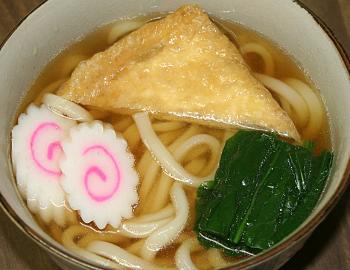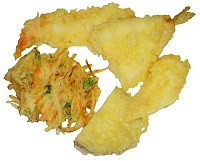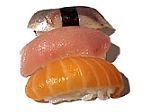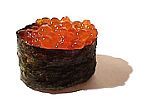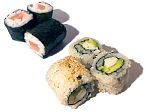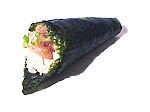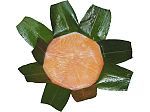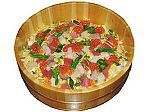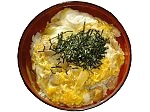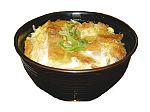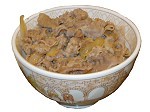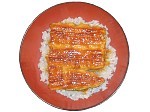As Thailand aims to become the "Kitchen of the World", the Northern Corridor Economic Region (NCER) master plan will have a willing market for its goal of turning our northern states into a premier food production centre for the Southeast Asian region.
The master plan targets to increase agricultural exports for the northern region to RM48.1 billion from RM32 billion per annum in 2005 and the average farmers' income to above RM1,500 per month from less than RM500 by 2012, in line with its objectives of poverty eradication and economic growth.
According to statistics recently released by the National Productivity Council in the 2006 Productivity Report, it states that the food processing sector accounted for only 3% or over RM17 billion of Malaysia's RM588.9 billion total manufacturing output last year.
This pales in comparison to Thailand, which is the fifth largest exporter of food products worldwide, with its food export expected to grow by 10.3% to a total of 607.1 billion baht (RM69.24 billion) this year.
One reason identified for the poor performance is that Malaysia has not fully leveraged or capitalised on the fact that it has one of the most bio-diverse ecosystems in the world. However, this is poised to change once the initiatives targeted to boost the agriculture industry are set into motion.
Achieving food security
Food security has always been a national policy objective for the country since the 1950s, but we have not been successful in reaching self-sufficiency goals.
For instance, self-sufficiency ratios of rice stood at 72.4% last year. Malaysia is also faced with a widening food trade deficit, whereby the RM7.4 billion deficit in 2005 is expected to jump more than 30% to RM11 billion by 2010.
At present, despite food export performance having doubled over the last decade, the country is still a net importer of food products with annual imports of RM18 billion as of last year.
The deficit is in part due to inefficient agricultural methods, resulting in paddy yields of between three and five tonnes per hectare of land, compared to the regional benchmark of eight tonnes per hectare.
As a result, we are still reliant on imports from countries like Vietnam and Thailand to meet the needs of our domestic market. In fact, Malaysia alone accounts for 9% of Vietnam's rice exports in 2006.
This dependence on international markets is risky due to the instability of the global rice market and negative repercussions of the liberalisation of the agricultural trade from free trade agreements.
Hence, the NCER initiatives will play an integral role in addressing these problems, principally by introducing modern agriculture methods, expanding agro-based processing activities, introducing new crops and facilitating the use of technology and best practices.
Effecting a mindset change
Implementation of the NCER master plan will not be without its challenges. While implementation efficacy is vital to its success, observers point out that nothing less than a paradigm shift among the people is needed to help it take off.
One of the biggest hurdles that the NCER initiatives will face is the issue of private land ownership, and how to educate a rural society that holds strongly to tradition on the benefits of new technologies and commercial farming.
To lessen the resistance to change, landowners will not be asked to sell their land, but instead will be encouraged to appoint a professional company to manage their land in return for a fixed monthly salary and profit-sharing from the produce.
Much like what's already being done in other countries, these professional agriculture companies will then be tasked to negotiate long-term contracts with major supermarket chains for the supply of agriculture produce, which will result in better income for the farming community.
Diversifying the agriculture business
In addition to introducing best practices and technologies to achieve better productivity, there are also plans to promote the growth of new crops such as climatic fruits, corn, potatoes and herbs.
As an alternative agriculture downstream sector, biotechnology has enabled the use of agriculture produce for higher value non-food purposes such as corn for biofuel and bioplastics; and potatoes for biodegradable packaging.
Incentives will also be put into place to encourage farmers to become entrepreneurs for food-based downstream products to create an additional income stream from the commercial sale of items like canned foods and preserves.
To jump-start some of these initiatives, start-up grants and RM100 million in venture capital will be made available to facilitate 'agri-preneurship', while soft loans will also be given out for purchase of equipment and key inputs.
Augmenting these measures, fiscal incentives — like pioneer status and investment tax allowances — are also planned to encourage and attract large corporations to partner the local community in commercial scale farming.
Improving infrastructure and education
Walking the talk, Sime Darby Bhd, the architect of the master plan, is investing in a seed academy that will be based in Perlis.
The research facility will focus on producing seeds of varieties with higher yields, that are pest resistant and have better suitability to local soil.
On top of seed research, the facility will also conduct research on downstream areas and bio-prospecting to identify new high value uses for agriculture produce.
Hand in hand with this research based push, after years of having to make do with below par infrastructure, the government intends to fund the implementation of better water management system and irrigation practices.
This is a key initiative as improved irrigation systems are expected to increase paddy yield per hectare of land as it will eliminate the problems that some farmers face who rely on the goodwill of their neighbours for access to water.
It is important to note that NCER, in the quest to raise living standards and quality of farming, will not be trampling on the land.
Much of the land in the NCER remains unused or under-utilised, with 51.9% of it now being gazetted as environmentally sensitive areas.
Only 3,500 hectares is earmarked to be re-designated for agricultural usage under the master plan. Obviously the focus is on quality and production excellence.


